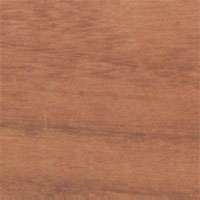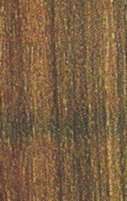 
Afromosia (Pericopsis angolensis)
Family: Leguminosae
Common names: Afromosia, Chianga, Chiwanga, East African afrormosia, Mbanga, Mmanga, Muanga, Mubamku, Muvanga, Muwanga, Mwanga, Umbanga
Distributed in: Central African Republic, Tanzania, Zaire, Zimbabwe (Africa)
Common uses: Agricultural implements, Boat building (general), Boxes and crates, Cabinetmaking, Canoes, Carvings, Charcoal, Decks, Flooring, Flooring: commercial heavy traffic, Fuelwood, Furniture, Heavy construction, Joinery, Light construction, Marine construction, Millwork, Mine timbers, Musical instruments, Plywood, Poles, Posts, Railroad ties, Sporting Goods, Tool handles, Turnery, Vats, Vehicle parts, Veneer: decorative, Wheel spokes, Wheels
Colors: the heart isPale brown, Yellow to golden-yellow to orangeand the sapwoodWell defined, White to yellow.The grain isStraight, the textureUniform
Natural durability: Resistant to attack from termites (Isoptera), Very durable
Kiln Schedules: UK=J US=T10D5S/T8D4S Fr=4
Kiln Drying Rate: Rapid (<10 days for boards < 32 mm, to <30 days for boards >= 63 mm)
Drying Defects: Slight surface checking
Ease of Drying: Easy
Tree Identification: Bole/stem form is unknown
Blunting Effect: Blunting effect on machining is severe
Boring: Easy
Cutting Resistance: Cutting Resistance with dry wood is difficult
Gluing: Easy to glue
Mortising: Easy to mortise
Moulding: Good finishing
Movement in Service: Good finishing
Nailing: Difficult to nail, Possible if prebored
Planing: Planes well, to a good finish
Resistance to Impregnation: Resistant sapwood
Resistance to Splitting: Very Poor
Response to hand tools: Difficult to machine
Veneering qualities: Veneers easily, Veneers moderately easy
Steam bending: Moderate
Turning: Good results
Polishing: Satisfactory; Staining: Finish is generally satisfactory
; Varnishing: Good;
- Numerical data Metric
- Numerical data English
- Strength properties
- References
 |
 |
 |
 |
| Item |
Green |
Dry |
Metric |
| Specific Gravity |
|
|
|
| Density |
|
865 |
kg/m3 |
| Bending Strength |
671 |
1046 |
kg/cm2 |
| Crushing Strength |
534 |
756 |
kg/cm2 |
| Hardness |
|
1144 |
kg |
| Impact Strength |
|
86 |
cm |
| Shearing Strength |
|
167 |
kg/cm2 |
| Stiffness |
117 |
135 |
1000 kg/cm2 |
| Tangential Shrinkage |
|
|
% |
| Radial Shrinkage |
2 |
|
% |
| Weight |
849 |
689 |
kg/m3 |
| Maximum Load |
|
|
cm-kg/cm3 |
| Toughness |
|
|
cm-kg |
| Static Bending |
|
|
kg/cm2 |
|
 |  |  |  | | Item | Green | Dry | English | | Bending Strength | 9547 | 14879 | psi | | Density | | 54 | lbs/ft3 | | Hardness | | 2524 | lbs | | Impact Strength | | 34 | inches | | Maximum Crushing Strength | 7596 | 10755 | psi | | Shearing Strength | | 2384 | psi | | Stiffness | 1665 | 1923 | 1000 psi | | Weight | 53 | 43 | lbs/ft3 | | Radial Shrinkage | 2 | | % | | Tangential Shrinkage | 4 | | % | |
Shrinkage, Tangential = very small
Shrinkage, Radial = very small
Modulus of Elasticity (stiffness) = medium
High
Mor/Bending strength = medium
Hardness (side grain) = hard
53-60 lbs/cu. ft.
53-60 lbs/cu. ft.
Shearing strength (parallel to grain) = high
Medium
Density (dry weight) = 61-67 lbs/cu. ft.
Density (dry weight) = 61-67 lbs/cu. ft.
Very hard
Toughness-Hammer drop (Impact Strength) = low
Medium
Max. crushing strength = very high
Low
Low
High
46-52 lbs/cu. ft.
46-52 lbs/cu. ft.
Very high
Small
38-45 lbs/cu. ft.
38-45 lbs/cu. ft.
Banks, C.H., Schoeman, J.P., Otto, K.P.,1977,The Mechanical Properties of Timbers with particular reference to South,Africa,South African Forestry Research Institute Bulletin,(Ed.,Schoeman, J.P. 1973 & Otto K.P. 1976,No.48Banks, C.H.,1954,The Mechanical Properties of Timbers with Particular Reference to those,grown in the Union of South Africa,Journal of the South African Forestry Association,No. 24 pp.44-65,[South,African Forestry Journal]Bois et Forets des Tropiques,1978,Kosipo - Entandrophragma candollei,Bois et Forets des Tropiques No.181,pp29-40Bois, P.J.,1966,The Strength Properties of Tanzania Timbers,Tanzania Forest Div. Util. Sec. Moshi Tech. Note, No.35Bolza, E., Keating, W.G.,1972,African Timbers - the Properties, Uses and Characteristics of 700 Species,C.S.I.R.O. Div. of Building ResearchBryce, J.M.,1967,Commercial Timbers of Tanzania,Tanzanian Forestry Division Util. Sec. MoshiDuff, C.E.,1944,Termite Resistance Test on the Copperbelt of Northern Rhodesia,Empire Forestry Journal,23(2,pp160-2Fanshawe, D.B.,1962,Fifty Common Trees of Northern Rhodesia,Natural Resources Board and Forestry Department, NdolaFerreirinha, M.P.,1955,Catalogo des Madeiras de Mocambique (pt 1,Min. do Ultramar Junta Invest. do Ultranar Memorias Serie Botanica, 2Goldsmith, B., Carter, D.T.,1981,The Indigenous Timbers of Zimbabwe,Forestry Commission, Zimbabwe Research Bulletin No.9Marshall, R.C.,1939,Silviculture of the trees of Trinidad and Tobago - British West Indies,O.U.P.,LondonMcCoy-Hill, M.,1955,Timbers of Tanganyika - Afrormosia and East African Mahogany,Timber Technology,63(2196, pp538-9Murira, K.,1984,Natural Durability Tests of Tanzanian Timbers 1955 - 1982,Tanzania Forestry Research Institute, Timber Utilisation Research Centre,,Moshi.Pardy, A.A.,1952,Notes on Indigenous Trees and Shrubs of S. Rhodesia - Afrormosia,angolensis,Ministry of Agriculture and Lands S. Rhodesia Bulletin,No.1675Storrs, A.E.G.,1979,Know your Trees - Some of the Common Trees found in Zambia,Zambia Forestry Department, NdolaTakahashi, A.,1978,Compilation of Data on the Mechanical Properties of Foreign Woods (Part,III) Africa,Shimane University, Japan, Research Report on Foreign Wood No. 7Tanzania Forest Department,1960,The Natural Durability of Local Timbers,Tanzanian Forest Dept. Tech. Note,No.14Tanzania Forest Department,1966,Flooring Timbers,Tanzania Forest Div. Util. Sec. Moshi - Timbers of TanganyikaTanzania Forest Division,1966,Afrormosia angolensis (East African Afrormosia - Mbanga,Tanzania Forest Div. Util. Sec. Moshi - Timbers of TanganyikaTanzania Forest Division,1966,Kiln Drying Schedules for Tanzania Timbers Technical Note no.38,Tanzania Forest Div. Util. Sec. MoshiWhite, F.,1962,Forest Flora of Northern Rhodesia,O.U.P. London
|









